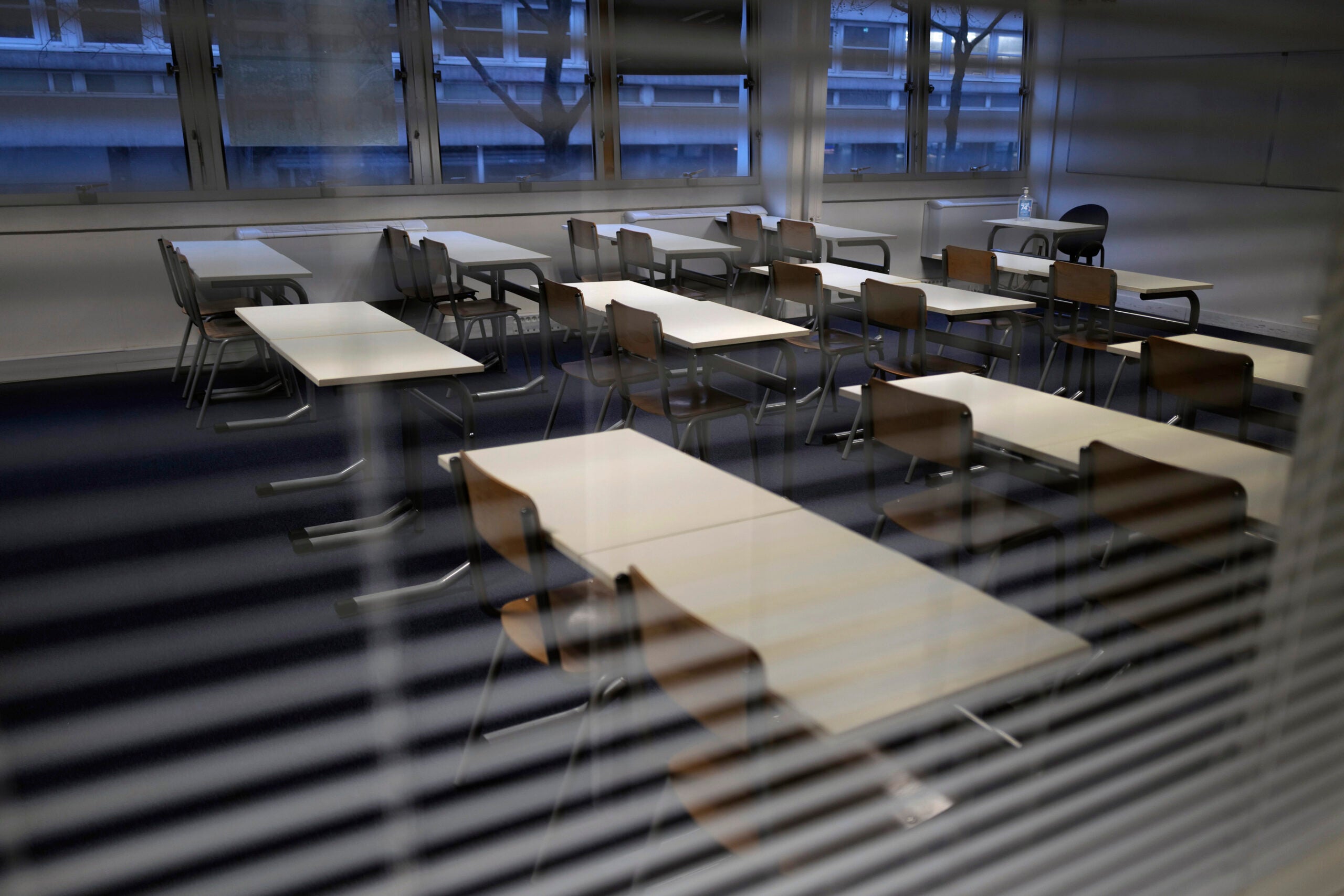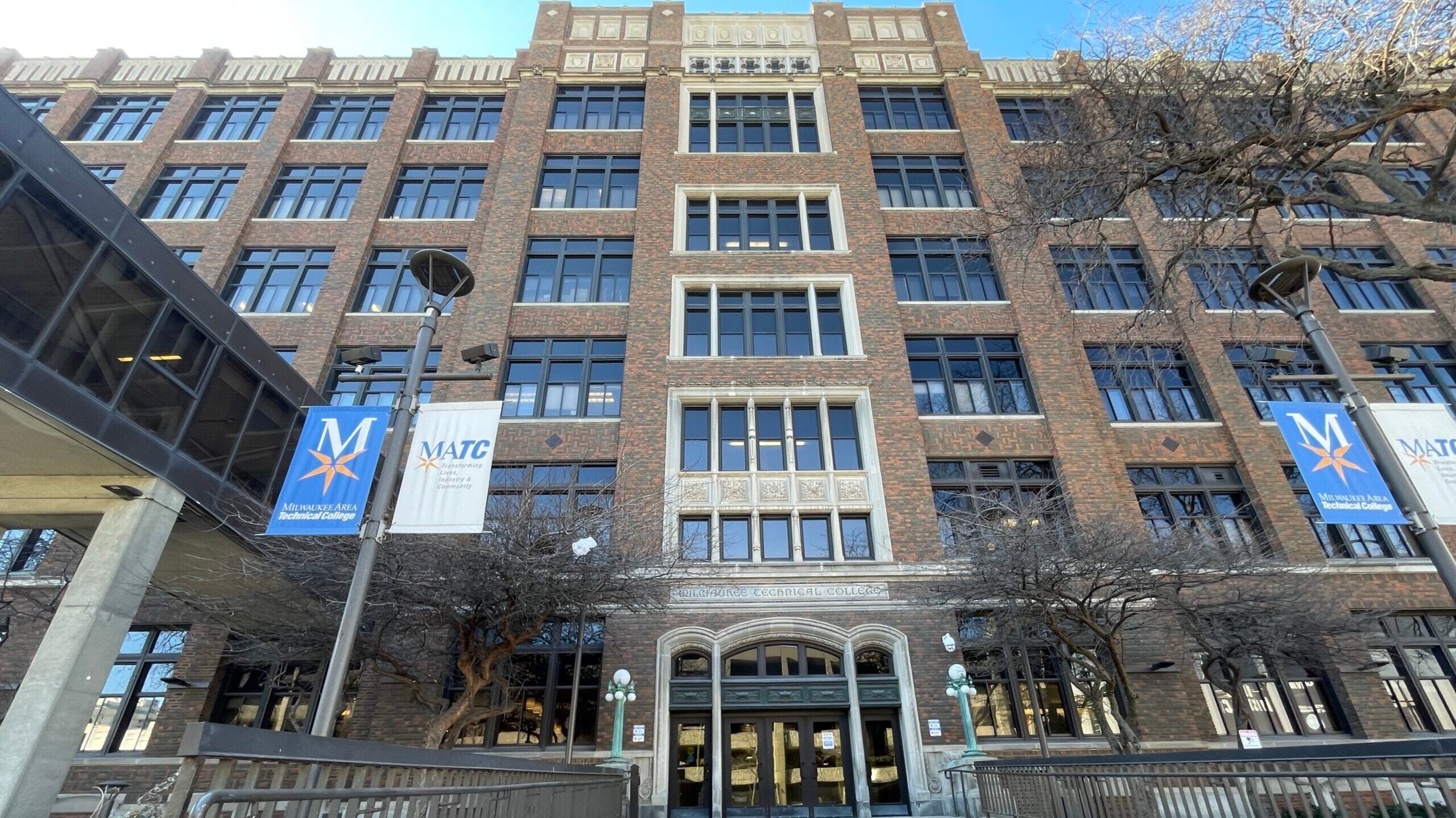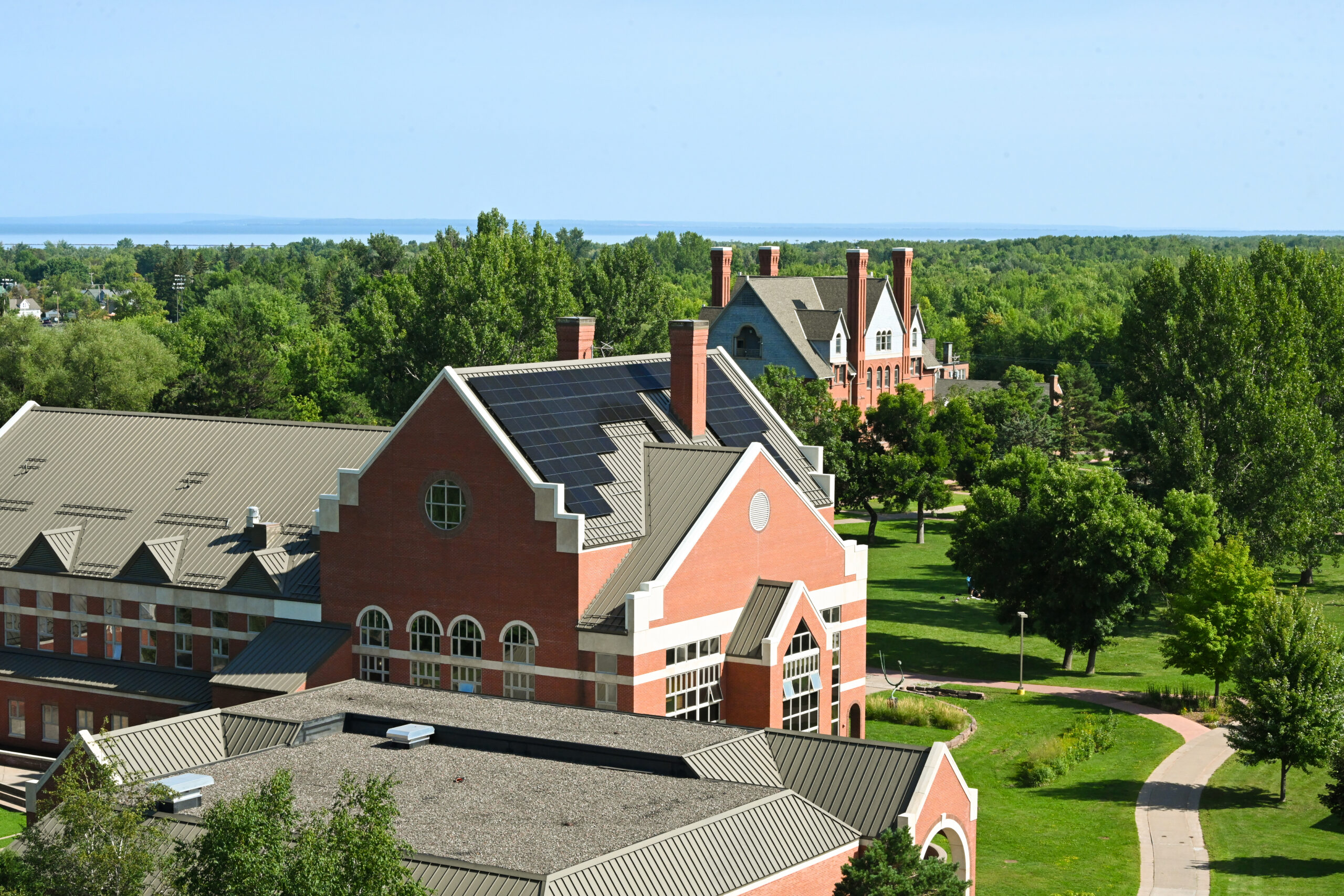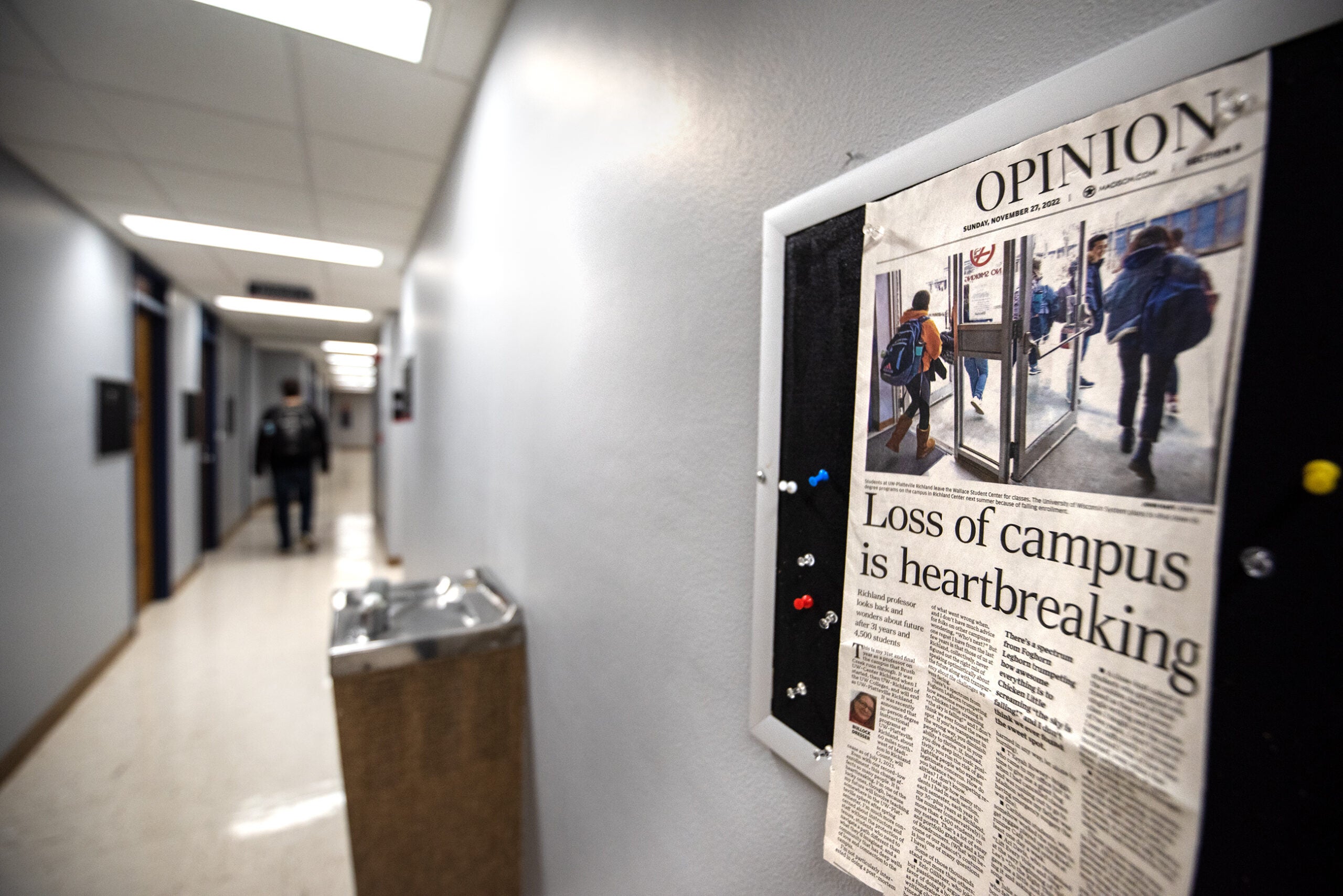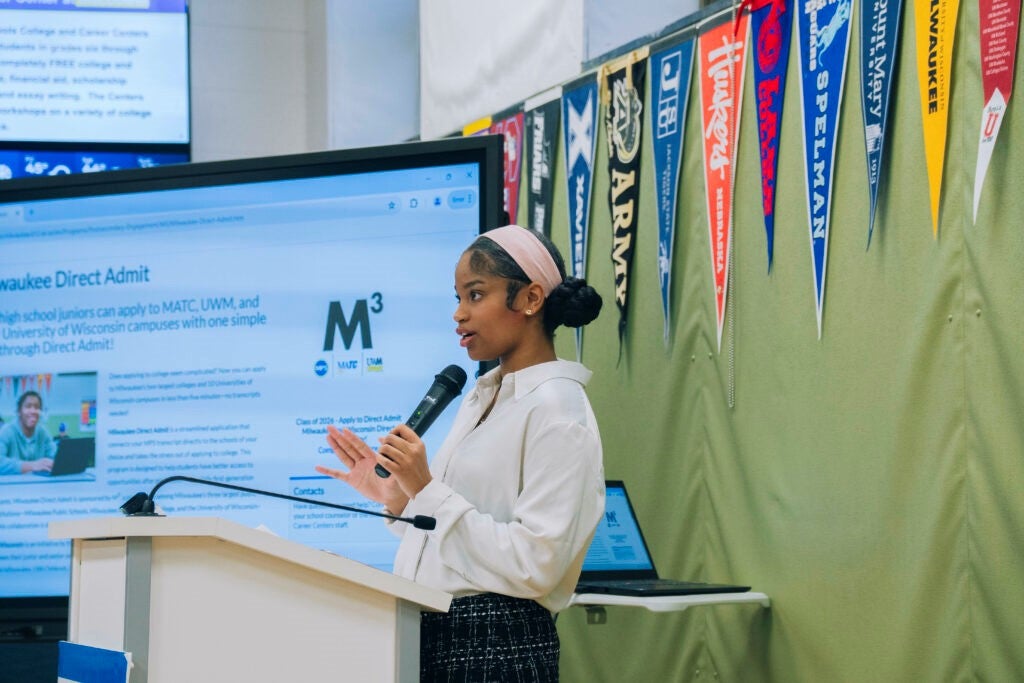About a quarter of Wisconsin’s high school students earn college credits during the school year. But participation in these programs varies widely across the state based on students’ access to participating schools, according to a new report by the Wisconsin Policy Forum.
Over the last decade, the number of students earning college credits through dual enrollment programs at public universities and technical colleges has more than doubled.
In the 2021-22 school year, 69,471 high school students earned college credits through dual enrollment programs at the University of Wisconsin System and technical college system.
Stay informed on the latest news
Sign up for WPR’s email newsletter.
The most popular classes are math, engineering, English, Spanish and medical terminology.
Dual enrollment is different from Advanced Placement classes, which offer high school students a chance to take university-level courses and earn college credit if they pass an assessment test.
Given the numerous types of dual enrollment programs, there could be several reasons for the steady and substantial enrollment increases, said Don Cramer, Wisconsin Policy Forum researcher who authored the report.
“High school students see these programs as a way to save time and money by earning credit and credentials ahead of schedule from local colleges or universities,” Cramer said.
“On the other side of the agreements, colleges use dual enrollment courses as recruitment tools, giving students previews of what they can expect if they ultimately enroll at their school,” he said. “Also, as many colleges see declines in the numbers of traditional students, dual enrollment can sometimes offer an additional revenue stream.”
The majority of students in dual enrollment programs take classes at their own high school, in classes taught by high school teachers approved by the college.
National research shows these programs have many benefits including college access, degree attainment and credit accumulation. But how well these programs prepare students for higher education and the workforce is still unknown, because few studies have been done on specific programs in Wisconsin.
“Because the majority of Wisconsin’s programs are through (the Wisconsin Technical College System), which focuses on workforce preparation, such studies would ideally track students from their high school career through college enrollment and completion to their first years of work,” Cramer said.
But it’s not that easy.
Cramer said tracking students or comparing dual enrollment students with students who didn’t go through the program would be difficult because in many cases, these are students who are already advanced or committed to higher education.
Dual enrollment participation varies across Wisconsin
The number of students who enroll in dual enrollment programs varies significantly by school district and region of the state.
In Milwaukee Public Schools, the state’s largest district, 935 students, or 4.7 percent, completed one dual enrollment course during the 2021-22 school year, according to state data.
In the Green Bay Area School District, 1,446 students, or 27 percent, have completed at least one dual enrollment course, who were all enrolled at UW-Green Bay. And in Racine Unified School District, 2,203 or 44 percent, of students completed a course.
Cramer said that’s because Gateway Technical College, with campuses in Racine, Kenosha and Elkhorn, and UW-Green Bay and UW-Oshkosh have been very proactive working with high school students.
Katie Graf is the director of High School Partnerships at Gateway Technical College. Over the last 10 years, the program has seen an increase of more than 200 percent. Last year, Gateway’s dual enrollment program served more than 7,400 students in Racine, Kenosha and Walworth counties at about 40 high schools.
“It’s really exciting because last year we were able to save our students more than $5 million in tuition and fees,” Graf said. “Not only are they able to earn credit in high school, but they are able to jumpstart that education and careers earlier.”
Graf said she has seen high school students graduate with enough technical college credits to have a certificate, a technical diploma or even an associate’s degree.
“It’s so cool to hear from these students, fresh out of high school, working as registered nurses or working in the manufacturing industry, and they are able to do that with little or no college debt, thanks to these dual credit programs,” Graf said.
Cramer said he would love to see these programs promoted more evenly across the state.
“I do think it’s somewhat unfair if students’ access is based more on where they live, and how close they are to schools that promote it more,” Cramer said.
Cramer does believe dual enrollment programs will continue to grow as the idea has gotten more support nationally and statewide.
The Department of Public Instruction has shown its support, now including enrollment information on its statewide school report cards.
The business community is also on board.
Wisconsin Manufactures and Commerce, the state’s largest business lobbying group, released its summer employer survey last month showing 99 percent of respondents supported additional funding for apprenticeships, dual enrollment credits and work-based learning opportunities for high school students.
“I think it is a very popular idea, especially as people are looking for more employees,” Cramer said.
Editor’s note: The story has been updated to remove data from Madison Metropolitan School District. District data was incomplete.
Wisconsin Public Radio, © Copyright 2025, Board of Regents of the University of Wisconsin System and Wisconsin Educational Communications Board.
